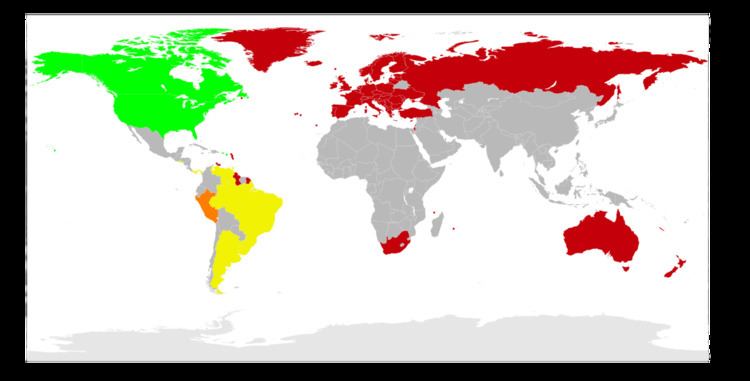 | ||
Call signs in Antarctica include a three letter region code and a series of numbers and letters.
Contents
Assignments for amateur radio
Amateur radio or ham radio call signs are unique identifiers for licensed operators in Antarctica. Call signs are regulated internationally by the ITU as well as nationally by governing bodies within each country who may have nationals operating in Antarctica. Call signs may also be issued by a local Antarctic authority (i.e. base commander) who chooses from a block reserved by their national body for that purpose. The Antarctic Treaty signed on December 1, 1959 (and entered into force on June 23, 1961), established the legal framework for the management of Antarctica, including allocation of amateur call signs.
The International Telecommunications Union does not assign call letter blocks to Antarctica since there is no single government there which can send delegates to ITU conferences. However, some individual countries reserve Antarctic prefixes or call letters from within their own call letter blocks as per this table. In some cases the assignment of call letters is made locally at an Antarctic base and the relevant national body is notified.
Reciprocal agreements
Although Antarctica is considered international by treaty, amateur radio operators in Antarctica are often subject to the reciprocal licensing requirements pertaining to the country under which the camp is flagged.
Special Events
The Worldwide Antarctic Program keeps a list of special event call signs issued from various countries at various times. TM4IPY was issued in 2007 by France to celebrate the International Polar Year as was IAØIPY, IA8IPY, IA7IPY & IP7IPY by Italy, GB4IPY by The United Kingdom, VYØICE/VE2 in Canada, LZØ7IPY in Argentina, EV5IPY in Belarus, CQ4IPY in Portugal, SNØIPY in Poland, YE2IPY in Indonesia, S5ØIPY in Slovenia, 5DØIPY in Morocco, and others. These callsigns were used by amateurs in their home countries.
History of call sign allocation
The Worldwide Antarctic Program maintains current internet Bulletins as to call sign activity in the south polar region, including 3,100 call signs used since 1945.
Islands on the Air
The Radio Society of Great Britain assigns islands into seven world districts, including Antarctica. It assigns IOTA Groups and Reference Numbers corresponding to these areas – Antarctic Islands are AN-xxx. Some of these IOTA groups have call signs assigned by a sovereign power, others have call signs assigned according to the Antarctic Treaty. Not all of these islands fall within the Antarctic Treaty area.
